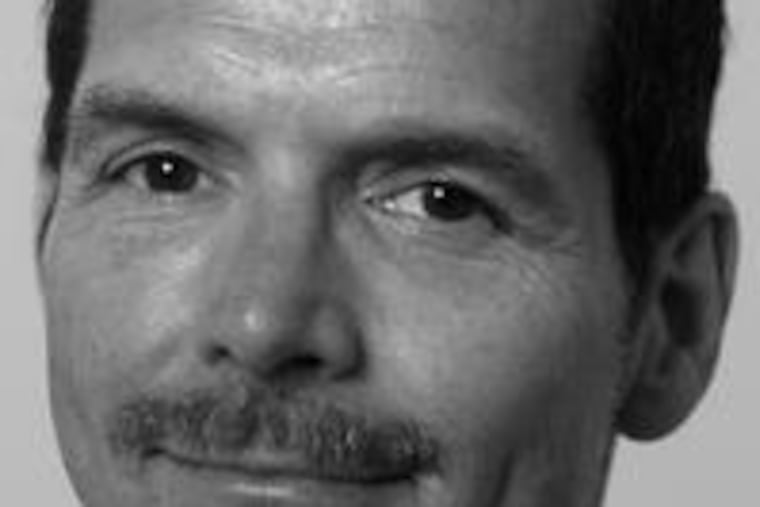Signs signal a new attitude
Philadelphia's new "gayborhood" designation was a long time coming, a time of both activism and pacifism.

By Lewis Whittington
When I was an 18-year-old gay teen hiding in Marcus Hook, I would sneak into Philadelphia for a tentative walk on the wild side in the gay community.
For a naive kid from the closeted suburbs that meant haunting bars and learning the subtleties of cruising for partners on the street. In those days, the gay bars peppered the red-light district, where prostitution, drugs and violence coincided with a night out. You had to watch your back. There were other dangers, as well. Harassment was all part of that great American straight male ritual of beating up queers.
Now, along with more bars, there is a thriving Philadelphia gay community that has even been officially dubbed the "gayborhood," with social, political and commercial visibility as an integral part of the city's urban landscape. Recently, the district unveiled 36 rainbow street signs, the universally recognized symbol for gay pride and diversity, along the area bordered by Chestnut, Pine, 11th and Broad Streets. (Mayor Street was there and sportingly sanctioned the area.)
Fred Bostwick, a social activist who has worked with several area and national gay, lesbian, bisexual and transgender (GLBT) organizations, thinks the signs are about "good tourism." Certainly, as other metropolises have realized, a gay point of destination is good business for a city.
Businessman Carlton Whittington (my gay, if not my blood, brother) also likes the signs. "Whenever I go to another city I want to know exactly where my people are," he said. "The signs are a brilliant idea."
Chief Inspector James Tiano, the police liaison to the GLBT and other minority communities, considers gay-straight relations in the city "very positive" and says that "the signs let everybody know they are welcome and this is a safe area." Tiano has worked hands-on to change the area over the last decade. "The police department is so open now," he said. "If there is a problem, I get a call and we get to the bottom of it. We have monthly meetings at the William Way Community Center to discuss issues and there are regular reports about any violence in the area. Diversity is our strength."
Visibility among GLBT people is always a positive, but those rainbows signs can be just a tourist stop at the corner of Gay and Gay if we don't make them mean more. Two years ago, I asked lifelong gay activist Frank Kameny, who carried gay civil rights signs in front of Independence Hall in the '60s, if he ever got discouraged by apathy in the gay community in the fight for civil rights. He replied, pragmatically, that most people are apathetic so why should gays be any different.
The new signs coincide with this month's Equality Forum GLBT confab, where thousands of gays and friends of gays check in with community organizations and commune to celebrate our sameness in diversity. Gay civil rights might be won in the streets, but until they are legislated, we have a long way to go, and some people have said that the signs might cue a level of ghettoizing.
Indeed, we might be over the rainbow in the gayborhood but we also must also be out and proud everywhere. The signs may be of the times, but I can still see the shadows of other unheralded gay landmarks - the places the rainbow flag was carried as the symbol of gay pride to fight intolerance.
It was unfurled to the ground when people lay on Broad Street, stopping traffic at an Act Up demonstration on AIDS awareness more than a decade ago. It was on Independence Mall in 1998 the week that gay college student Matthew Shepard was killed in Wyoming, and we stood in solidarity against the violence toward our people. It was carried to rally communities to take care of their own. It was carried to urge solidarity to advance GLBT civil rights.